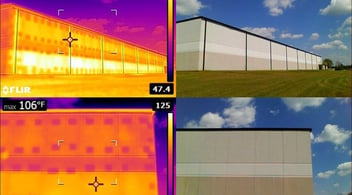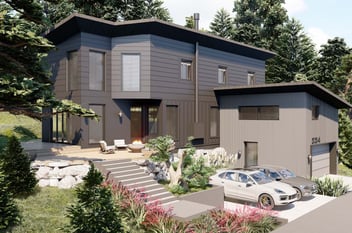Living in Fire Traps – We Have Better Options, So Why Aren’t We Using Them?
So far this year thousands of homes have been destroyed and hundreds of lives lost, and the Fire Season keeps getting longer.
David Wallace-Wells’ recent NY Times article, “The Age of the Urban Inferno is Here”, points out that "Across America, 59 million homes lie within one kilometer - a bit more than half a mile - of a recent fire, and between 1990 and 2015, more than 30 million homes were added to the most fire-prone regions of the country." Stop and think how those 30-million homes are most commonly built. It’s our old construction mainstay, wood framing.
David also notes, “…but they (the firestorms) are also a throwback, to a time a century or more ago when towns and cities, in an era of wood-frame buildings and premodern firefighting, regularly stared down the threat of incineration by flame.” That way of “wood-frame buildings” is even more prevalent today, and there’s a lot more of it. Wood-frame buildings are one of North America’s biggest “Fatal Flaws”; we’re building more and more Fire Traps.
Most of our newer low and mid-rise buildings are wood-framed, with varying layers of plywood, OSB, and drywall to complete the exterior shell. Every day you see more “Code-Minimum” construction going up. Why? People generally build only to Code-minimums so that they can build as inexpensively as possible. The result is that a lot of buildings burn relatively easily and offer little protection for any considerable length of time. Per Ready.gov, an official website of the U.S. Department of Homeland Security, “A fire can become life-threatening in just two minutes. A residence can be engulfed in flames in five minutes.”
As recent urban and suburban fires have shown, these extra hot, often wind-driven, Infernos burn through typical wood construction very easily. Even when fire-rated walls are used, buildings are often located on lots where the distances between the buildings and the property lines are as minimal as possible, and so if one house burns, then the next one likely will too unless the fire truck is right there to fight it.
The reality is that with wood framing a building and its occupants’ fate can be totally at the mercy of how strongly the wind blows and in which way. Buyers, builders, architects, developers, planners, and Code people often just don’t know any better.
They don’t know that they can have thoroughly fire-resistant construction for less money (yes, safer AND cheaper) by using MgO-faced Structural Insulated Panels (“MgO SIPs”). While costing more for materials, with a good design they actually save so much time and labor that overall one ends up either paying the same or significantly less money for a quicker, easier, and safer building.
One can find many videos on the internet by MgO materials suppliers that show how very fire-resistant MgO construction is, such as 8-hours long flame tests and side-by-side MgO vs Wood burn demonstrations, like the ones from MGO Systems on their Home page (push the play arrow), and by NEXGEN Building Products in their “Fire Resistance Showdown: MgO vs OSB” video seen below. But beware of misleading and negative claims by industry competitors, such as drywall companies that are rightfully nervous about their own limitations and the growing MgO competition.
Most MgO panel and board manufacturers, however, are not building designers, architects, or engineers. Most manufacturers still rely upon the Owner’s Design Professional of Record to be the one responsible for Code-compliance and a “proper” design. It’s good when manufacturers don’t do things that are beyond their competencies, but it’s NOT good when most architects still don’t even know how to design a panelized building. It’s also not good when the Codes don’t reflect the superior performance and safety levels of MgO panels.
Thankfully, people are now becoming more aware how MgO panels are very often the best building choice, learning how to use them, and finally now the Codes are giving additional credit where it’s due. But how many more fires will it take until more people wake up and until the Urban and Suburban Infernos are no longer so deadly?
Please let me know if you’d like further information on MgO boards, panels, building design, construction, business, consulting, or otherwise.



